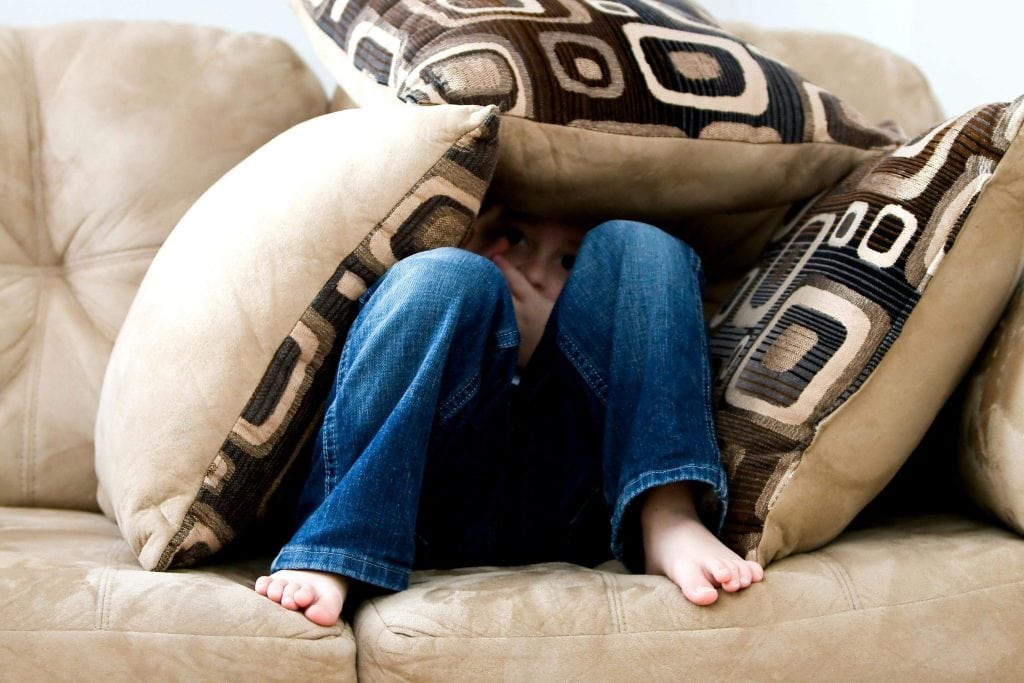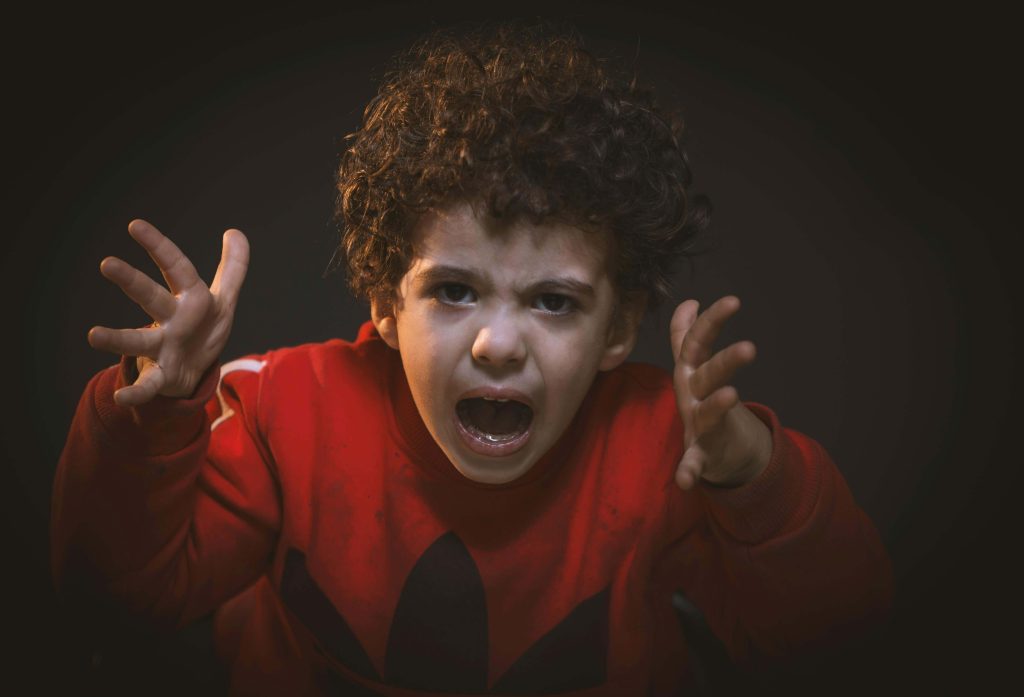Autism Shutdown Symptoms: What They Are and How to Support Your Child at Home
Autism shutdown symptoms aren’t talked about nearly as much as meltdowns, which is why I think many adults and parents struggle to recognize them in kids. Unlike meltdowns, which are more outward expressions of distress, shutdowns are an internal response to overwhelm. Your child may stop talking, avoid eye contact, or withdraw completely—not because they’re ignoring you, but because their brain and body need a break.
As a school psychologist, I’ve worked with many families who (understandably) misinterpret shutdowns as laziness, avoidance, or even defiance. Some autistic kids are also misdiagnosed because shutdowns can look like anxiety, selective mutism, or executive functioning challenges. But understanding shutdowns makes it easier to respond with support instead of frustration.
This blog post will help you:
- Recognize autism shutdown symptoms and their causes
- Understand how shutdowns compare to meltdowns, anxiety, PDA, and burnout
- Learn how to support your child before, during, and after a shutdown
By the end, you’ll know what to look for, what’s triggering shutdowns, and how to help your child recover without overwhelming them.

Why Do Autism Shutdowns Happen?
If your child suddenly goes quiet, stops responding, or pulls away from interaction, it’s not random. Autism shutdown symptoms usually happen when a child is overwhelmed and doesn’t have the energy to keep engaging. Unlike meltdowns, which are more outward expressions of distress, shutdowns are more internal. Your child might stop talking, avoid eye contact, or retreat to a quiet space because their brain and body need a break.
The key to supporting your child is understanding why shutdowns happen in the first place. Some of the biggest causes include:
- Sensory overload: Too much light, noise, movement, or even certain smells can be overwhelming. This is especially common in busy environments like schools, grocery stores, or loud family gatherings. While some autistic kids experience sensory meltdowns when overwhelmed, others shut down instead. Understanding the difference between a sensory meltdown and an autistic shutdown can help you respond in a way that meets your child’s needs.
- Emotional overwhelm: When feelings get too big to process, shutting down can be a way of coping—especially if a child doesn’t have the words to explain what’s wrong.
- Too many demands at once: Homework, chores, and social interactions might not seem overwhelming on their own, but when they stack up, they can feel impossible to manage.
- Masking fatigue: Many autistic kids spend all day trying to “hold it together” at school or in social situations. By the time they get home, they’ve run out of energy and need to shut down to recover.
- Sudden change: A change in routine, an unexpected visitor, or last-minute plans can throw things off and make it hard to adjust.
- Ongoing stress: Shutdowns don’t always happen right away. Sometimes they build up over days or weeks of stress before a child reaches their limit.
Beyond Shutdowns vs. Meltdowns: Why It’s Important to Compare Other Overlaps
Understanding why shutdowns happen is important, but it’s also just one piece of the puzzle. Many kids who experience shutdowns aren’t just having autistic shutdowns. Their behaviors may overlap with other conditions, making it harder to pinpoint what’s going on.
If you’ve ever wondered whether your child’s response is actually a shutdown or something else, you’re not alone. While shutdowns are distinct, they can look really similar to fatigue, anxiety paralysis, or autistic burnout. Recognizing these differences can help you better understand what your child is experiencing and what kind of support they need.

How Shutdowns Compare to Other Experiences:
- Meltdowns: A meltdown is an external response or outward expression of overwhelm (crying, yelling, or lashing out) while a shutdown is an internal response. A child in shutdown may stop talking, freeze, or withdraw completely.
- Fatigue: Shutdowns aren’t just about being tired. A well-rested child can still shut down if they’re overstimulated, emotionally drained, or overwhelmed by too many demands. So “fatigue” can manifest in different ways.
- Anxiety Paralysis: Both involve freezing, but the cause is different. Shutdowns happen when there’s too much input, while anxiety paralysis is driven by fear of failure or consequences.
- Pathological Demand Avoidance (PDA): Kids with PDA experience shutdowns, but their shutdowns happen when demands feel threatening, not just overwhelming. They may resist all expectations before shutting down.
- Selective Mutism: Some kids experience shutdown-related mutism, but selective mutism is chronic and rooted in anxiety, rather than being triggered by overstimulation or exhaustion.
- Autistic Burnout: Shutdowns last for hours or days, but autistic burnout is long-term. It can lead to exhaustion, loss of skills, and an overall decline in functioning.
How to Tell the Difference (and Why It’s Okay If There’s Overlap)
If your child’s experiences seem to fit more than one of these categories, that’s completely normal. Many autistic kids experience a mix of shutdowns, anxiety paralysis, and even elements of burnout over time. Instead of trying to force a perfect label, the best approach is to focus on what’s triggering the response and what helps your child recover.
I often talk about the importance of taking a whole child approach and this is a perfect example. You need to know what’s going on at the root to determine the best course of action.
How to Support Your Child at Home Without Overwhelming Them
Now that we’ve covered why shutdowns happen and how they compare to other experiences, let’s talk about what actually helps. When a child is in shutdown mode, the last thing they need is pressure to “snap out of it” or explain what’s wrong. The best way to support them is to recognize the early signs, create a low-demand environment, and give them time to recover at their own pace.
Here’s what that looks like before, during, and after a shutdown.
Before a Shutdown: Recognizing Early Warning Signs
Shutdowns don’t usually come out of nowhere. If you know what to look for, you can often spot them before your child completely disengages.
Signs a Shutdown Is Coming:
- Speech slows down or becomes robotic.
- Body movements become stiff, slow, or shaky.
- Responses get vague (“I don’t know,” “I can’t”).
- Increased irritability or needing to be alone.
What Parents Can Do Early On:
- Reduce talking and verbal demands: Instead of asking multiple questions, try offering simple, nonverbal choices (pointing to options or using gestures).
- Help them move to a calm, familiar space: Encourage, but don’t force, a transition to a quieter environment.
- Offer a way to exit stressful situations: A sensory break, quiet time alone, or even just stepping away from the activity can make a big difference.

During a Shutdown: What Actually Helps?
Once a child is in shutdown mode, the focus should be on creating a safe, low-pressure environment.
What Not to Do:
- Do not force eye contact, answers, or explanations.
- Do not treat it as defiance or “bad behavior.”
- Do not try to “snap them out of it.”
What to Do Instead:
- Give them space, but stay nearby if they feel safer with you there.
- Limit sensory input by dimming lights, lowering your voice, and avoiding touch unless they seek it out.
- Use simple, supportive phrases to help them feel grounded:
- “You’re safe.”
- “Take your time.”
- “I’m here if you need me.”
Even if they don’t respond, knowing they’re supported without pressure can help them start to recover.
After a Shutdown: Helping Kids Recover & Regulate
Once the shutdown passes, your child might not be ready to jump back into regular activities right away. Recovery is just as important as support during the shutdown itself.
What Recovery Looks Like:
- They may be exhausted and need time to rest.
- They may not want to talk about it immediately (or at all).
How to Support Them After:
- Offer food and hydration to help with energy levels.
- Avoid over-explaining or asking too many questions: Instead of digging into “what happened?” focus on moving forward.
- Help them reconnect with a familiar, low-pressure activity, like listening to music, watching a favorite show, or doing something comforting and predictable.
Shutdowns do not last forever, and kids do recover. The key is giving them the space and support they need without overwhelming them in the process.

Supporting Autism Shutdown Symptoms with Awareness and Care
Symptoms of shutdown in an autistic person can be difficult to recognize at first, but once you understand the patterns and triggers, it becomes easier to provide the support your child needs. Shutdowns aren’t a sign of defiance or disinterest—they’re a response to overwhelm.
The best thing you can do is observe, adjust, and support without pressure. Recognizing early warning signs, reducing demands, and creating a low-stress environment can help prevent shutdowns from escalating. If they do happen, staying calm, limiting sensory input, and offering quiet reassurance will go a long way in helping your child recover.
If this blog post helped you better understand your child’s experience, I’d love to have you as part of the community! Subscribe for more expert-backed insights on autism, learning differences, and practical parenting strategies.







